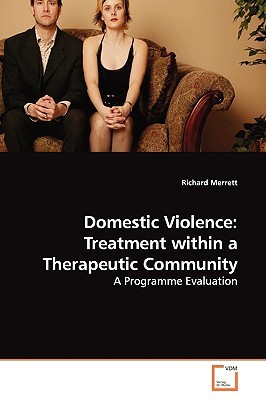
- We will send in 10–14 business days.
- Author: Richard Merrett
- Publisher: VDM Verlag
- ISBN-10: 3639141520
- ISBN-13: 9783639141528
- Format: 15.2 x 22.9 x 0.7 cm, softcover
- Language: English
- SAVE -10% with code: EXTRA
Reviews
Description
Domestic violence is highly prevalent both within Australia and internationally. Many intervention programmes for men who engage in domestic violence are available, however there is a lack of consensus as to which approach is most effective. This book provides an outline of the current treatment options and more specifically looks at a unique approach that is available within Australia, called Breathing Space. Breathing Space is a therapeutic community that offers a multi-systemic, best-practice treatment approach for men who engage in domestic violence. This qualitative programme evaluation of the processes used within Breathing Space, comprised of observations and interviews with residents and staff. Findings indicated that Breathing Space provided a number of benefits to residents, however confidence that treatment would reduce violence was low. Suggested improvements included strengthening professional boundaries, improved screening of residents, compulsory attendance at group therapy, and a greater focus on criminogenic needs. This book should be especially useful to those establishing, managing or working within a treatment centre for men who engage in domestic violence.
EXTRA 10 % discount with code: EXTRA
The promotion ends in 16d.12:02:03
The discount code is valid when purchasing from 10 €. Discounts do not stack.
- Author: Richard Merrett
- Publisher: VDM Verlag
- ISBN-10: 3639141520
- ISBN-13: 9783639141528
- Format: 15.2 x 22.9 x 0.7 cm, softcover
- Language: English English
Domestic violence is highly prevalent both within Australia and internationally. Many intervention programmes for men who engage in domestic violence are available, however there is a lack of consensus as to which approach is most effective. This book provides an outline of the current treatment options and more specifically looks at a unique approach that is available within Australia, called Breathing Space. Breathing Space is a therapeutic community that offers a multi-systemic, best-practice treatment approach for men who engage in domestic violence. This qualitative programme evaluation of the processes used within Breathing Space, comprised of observations and interviews with residents and staff. Findings indicated that Breathing Space provided a number of benefits to residents, however confidence that treatment would reduce violence was low. Suggested improvements included strengthening professional boundaries, improved screening of residents, compulsory attendance at group therapy, and a greater focus on criminogenic needs. This book should be especially useful to those establishing, managing or working within a treatment centre for men who engage in domestic violence.


Reviews